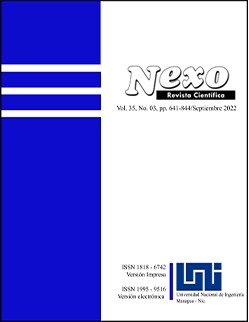New cryoscopic temperature determination technology for plant-based products
DOI:
https://doi.org/10.5377/nexo.v35i03.15006Keywords:
cryoscopic temperature, freezing rate, crystallization process, phase transitions, freezing thermogramsAbstract
The determination of cryoscopic temperature is an important parameter in the calculation of low-temperature processing modes of frozen products. The process of rapid freezing is accompanied by temperature changes, therefore, to develop energy-saving and effective methods of preserving and processing fruit and berries, it is necessary to accurately determine some variables that affect the result of freezing. The study aimed to develop a differentiated analysis technique for determining the cryoscopic temperature and the crystallization temperature of the eutectic points of sucrose and glucose solutions. To determine the cryoscopic temperatures in the study, the method of thermal analysis based on the construction of freezing thermograms was used. The study was conducted using berries grown in the Kemerovo region (Russia). As a result of the study, it was found that the cryoscopic temperatures were most influenced by the total (free and bound) moisture content and organic and mineral substances in berry juices. The authors also determined cryoscopic temperatures of different black currant, sea buckthorn, and juneberry varieties. The developed technique will allow for the simulation of freezing processes under various processing conditions.
Downloads
1672
Downloads
Published
How to Cite
Issue
Section
License
Copyright (c) 2022 Universidad Nacional de Ingeniería

This work is licensed under a Creative Commons Attribution 4.0 International License.
The authors who publish in Nexo Scientific Journal agree to the following terms:
- Authors retain the copyright and grant the journal the right of the first publication under the license Creative Commons Attribution License, which allows others to share the work with a recognition of the authorship of the work and the initial publication in Nexo Scientific Journal.
- Authors may separately establish additional agreements for the non-exclusive distribution of the version of the work published in the journal (for example, in an institutional repository or a book), with the recognition of the initial publication in Nexo Scientific Journal.
- Authors are allowed and encouraged to disseminate their works electronically (for example, in institutional repositories or in their own website) before and during the submission process, as it can lead to productive exchanges, as well as earlier and greater citation of published works.







